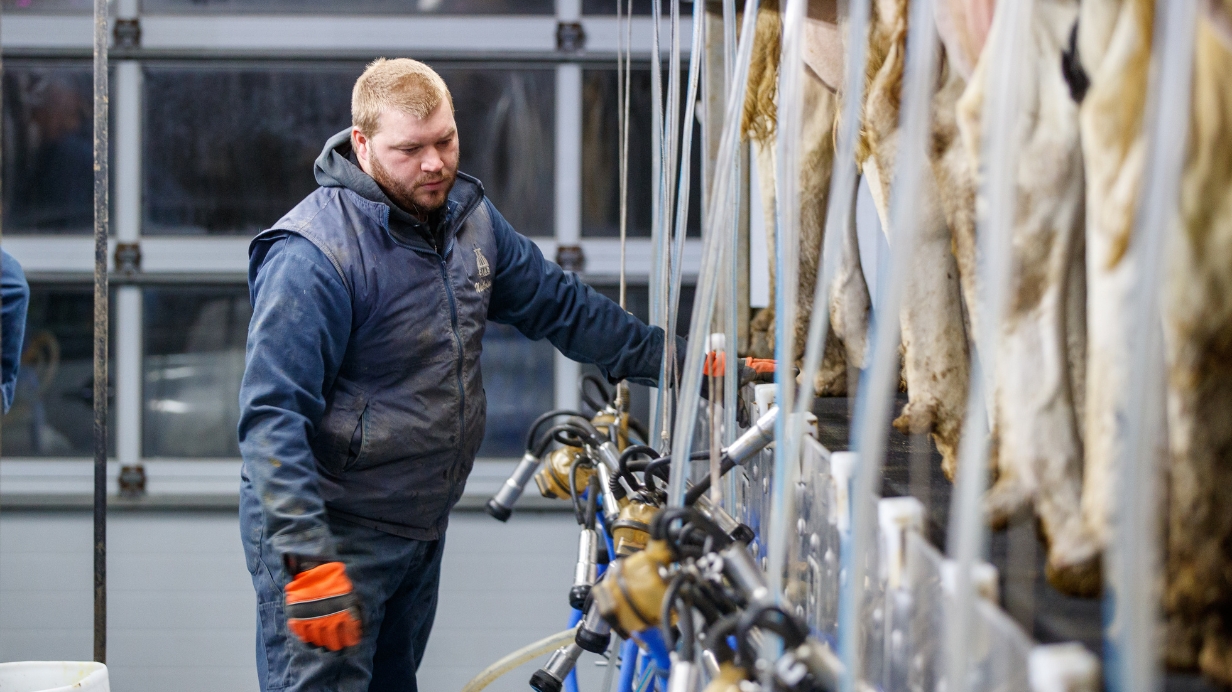How to reduce the impact of cold weather on your dairy herd
In winter as in summer, cows are subject to thermal stress. And while you can’t control the weather, you can reduce its impact on your herd and improve milk production efficiency.
“Winter brings its share of herd management challenges,” says Jean-François Lemay, a technical and business strategy coordinator, Ruminant sector for Covris and Novago Coopérative. “And if the cold isn’t managed properly, it affects productivity.”
Cold weather can slow down calf weight gain and affect a cow’s readiness to calve, especially because of the metabolic disorders it can cause (displaced abomasum or “twisted stomach,” retained placenta, ketosis, etc.).
“If a cow preparing to calve has an energy deficit because she’s fighting the cold, there’s bound to be a drop in milk production at the start of lactation,” says Lemay.
So how can we reduce the impact of cold weather on dairy cows?
Optimize the humidity level in your barn
“It's all about temperature, air speed and humidity,” says Lemay.
According to him, you need to ventilate your barn at four to six air changes per hour: “Less than that and the barn will be warmer but far too humid, with high ammonia levels. On the other hand, if you change the air too often, the barn can get too cold.”
If you keep your cows in a naturally ventilated barn, you’ll still need to take humidity into account and adjust the interior operating temperature. You can also use high-volume, low-speed (HVLS) ceiling fans that can be set to run in reverse to recover some heat.
Optimize your herd’s diet
Once the outside temperature reaches 0 °C, cows need to start increasing their voluntary dry matter intake. “Except that at some point,” Lemay says, “cows reach their maximum consumption capacity—like us, they’re just not hungry anymore! So, to make up for the shortfall, we give them feed that’s more energy dense, such as corn silage or grain corn.”
There is no mathematical formula or table to calculate exactly how much corn silage and/or grain corn should be fed to cows in winter based on temperature. But Sollio Agriculture’s agri-advisors can help you adjust your feed program.
The goal is always to give your cows the right amount of feed, along with fresh (but not ice-cold) water. And Lemay says: “If extreme cold is in the forecast, farmers should adjust their mix a day or two in advance.”
As for calves, they are more sensitive to the cold. Starting in November, you can gradually increase the concentration of milk solids in their diet. Our agri-advisors can also help you make the right adjustments based on your nursery setup and environment.
Follow this checklist
Here are some things you can do to reduce your herd’s thermal stress in cold weather:
- Provide dry, insulating bedding
- Ensure access to high-quality (but not ice-cold) water (heated waterers are a good option)
- Provide sufficient feed
- Check the forecast and adjust rations (with corn silage or grain corn) one or two days in advance of any bouts of extreme cold
- Ensure adequate ventilation
- For calves, gradually increase the concentration of milk solids in their diet, starting in November
- For any outdoor facilities, keep an eye on the wind


